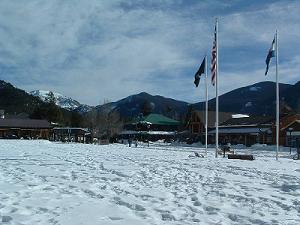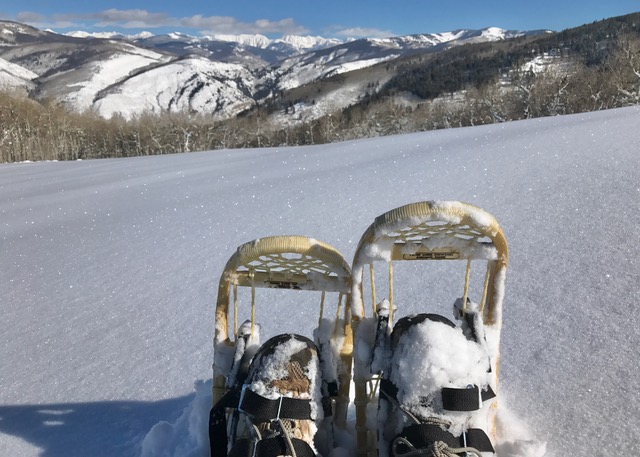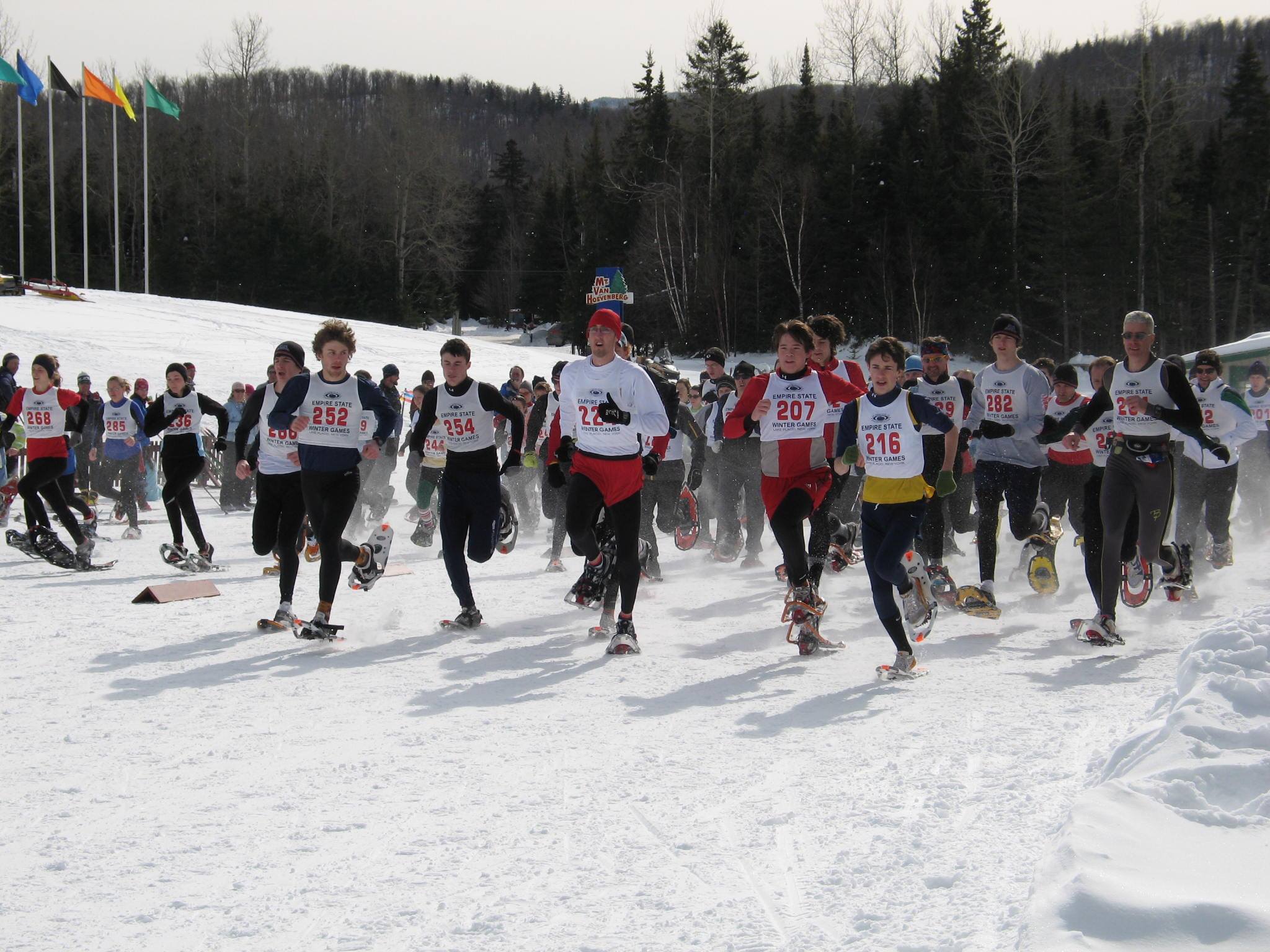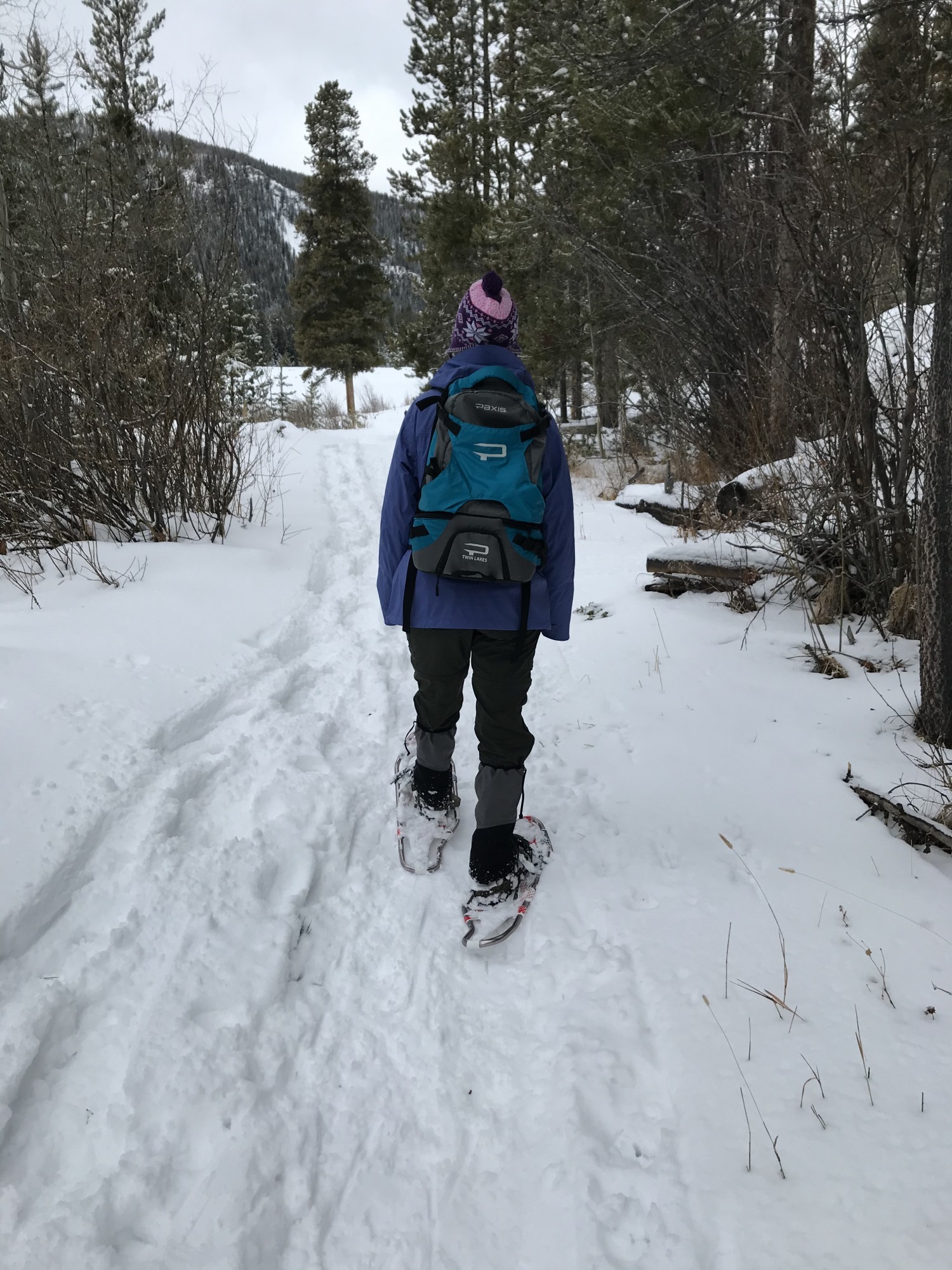A wonderful time of the day to snowshoe is . . . well, anytime is great, actually, but for many the schedule doesn’t have any free time once the day gets underway. Or one is so worn out by late afternoon the requirement to load up the equipment and go overwhelms the desire. Snowshoes never felt so heavy.
The solution? Snowshoe early, before time takes over and dictates your day. Many athletes utilize this private time and take advantage of the opportunity to exercise, to get out on the trail with snowshoes. I’m one of those.
Through many failed early morning session attempts, certain lessons have been learned that may help you accomplish a pre-dawn snowshoe trek. I must confess, first, to the Judge of Snowshoeing “Yes, yes, your Honor, I have turned over in bed, pulled the covers up, reset the clock and slept in. Satisfied now, your Honor? Do I need sign a confession?”
Perhaps I need to go to Confession and ask penance for my sin of wasting a possible time to commune in nature with snow. Through experience I can show you certain procedures that improve the odds of one getting out the door with snowshoes in tow. I’ve learned them the hard way. Here’s the list:
The 90% rule for early morning snowshoeing is: 90% of the work of an early morning session is in the simple effort of getting out of bed.
So try this: At the sound of the alarm, you turn, put the feet on the floor, and stand up . . . you’re almost there! Getting out of the bedroom and spending the next two minutes starting your standard morning wake-up routine is paramount. Have that timed coffee maker set so it is brewed and hot before you get up. Other than some sudden change in the weather, like a rain storm — yuck — screwing up the snow, you’re virtually assured to getting this session in.
A subset to the 90% rule is: Have everything laid out or prepacked in your vehicle.
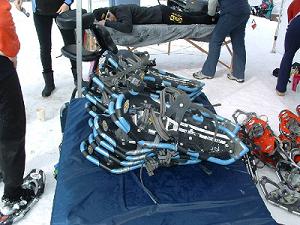
By accomplishing this task the afternoon or night before, you are committing to yourself that you are serious about the idea of leaving a warm bed, a warm abode, maybe a warm body snuggled next to you in order to go out in the cold and work up a sweat. Well, not actually sweat because we all wear wicking materials that get that moisture off of us before it turns to perspiration, right?
The frustration factor is also reduced dramatically by getting this prep work out of the way. For example, this morning, a Monday morning, with the Mamas and Papas singing woefully, “Monday, Monday” in my brain, I have estimated a schedule that allows me to snowshoe one hour between 4:30 a.m. and 5:30 a.m. To get up, dress with my winter workout clothing, drive to the conservatory area for some hill and trail work, I set the clock for 3:30 a.m. I further commit my brain to waking up and getting out of the house by backing up the alarm clock with the cell phone alarm feature set five minutes later to catch me in case I try to change my sleep addled mind (a trick I learned from my brother, Paul, is leaving the phone on 24/7/365 and recharging next to the bed at night).
You have dealt with finding all of your clothing and required items the night before so the stomach churning panic of digging to find, say, your head gear while you are trying to leave is eliminated. Why create artificial stress when life creates enough of the real deal?
I back out of the garage, drive, park, slip on the snowshoes, leave a note in the car window “Gone Snowshoeing. Phillip” that is retrieved from the glovebox just in case a patrol car or ranger cruises the parking area. The note is left out ‘just in case’ no matter where snowshoeing is occurring or what time of day it is. It may not explain the wacky snowshoer but, say, at 4:40 a.m., it explains what this car is doing parked at this spot. By itself.
I wear my Nathan chest harness adapted for carrying fuel bottles (See my article “Snowshoe Endurance Training in Winter Snow” for a picture) but since I’m only out for 60 minutes I carry just one bottle. Even though I am unlikely to drink even that given the cold and shortness of the tour, I like to practice in the gear that will be worn in any long distance snowshoe event. In the other bottle ‘pocket’ my cell phone is packed as an emergency lifeline to normal people.
Finishing my hour snowshoeing in the woods, now feeling alive and stimulated, on top of the world, I go about the process of taking off clothes that won’t be needed while driving to the showers in my office building. One trick I like is putting shoe trees back in my running shoe since I leave them strapped in the appliance after use. The running shoes, if wet or damp, don’t shrink; regardless, they seem easier to slide my size 13s into when wearing my preferred double sock combo next time.
I would also suggest not going to a new area for one of these morning jaunts unless you’re meeting someone who knows the terrain and can give you explicit directions on all turn offs. Finding signs in the dark can be difficult and that nasty symptom of stress starts to rear its ugly head as you waste time doubling back, looking for places to turnaround, wondering, “Where is this place after all?”
Instead, scout out the new place during the day; learn the time it takes to drive there, note signs and other land marks showing where to turn, and, importantly, where to park once you cruise the lot.
Now you’re ready to go snowshoeing early in the day.
You may know of some additional ideas so email me philsnowshoe@aol.com, and Snowshoe Magazine will work to get them out with credit to you.
Phillip Gary Smith gets up at these insane hours and starts the day from his home in Edina, Minnesota. His wife is the sane one.
